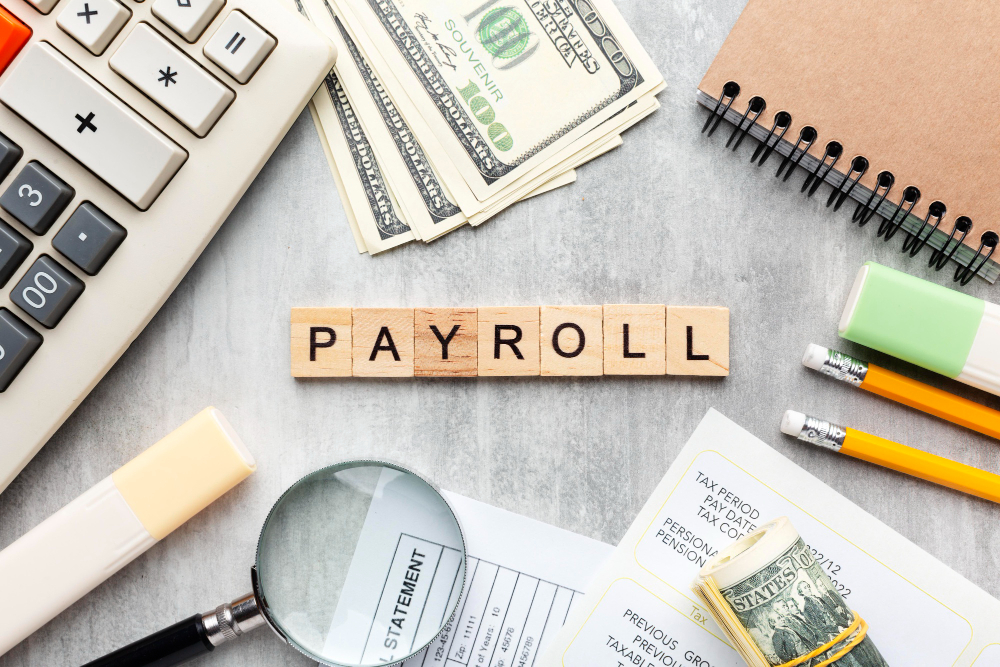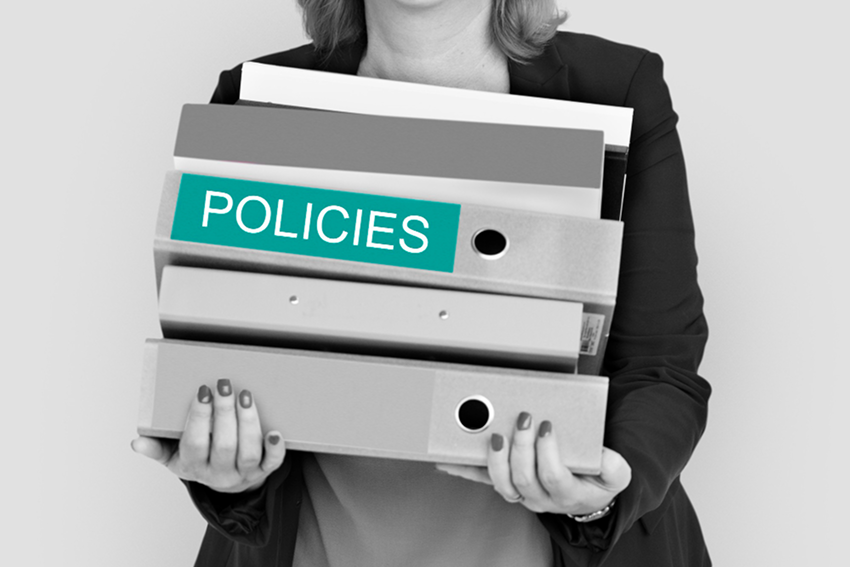Business Interruption Insurance (Fire Loss of Profit Insurance i.e. FLOP Insurance)
Business Interruption Insurance covers income loss and extra expenses due to disruptions caused by property damage, ensuring financial stability.
- Extended Indemnity Period
- Contingent Business Interruption
- Extra Expense Coverage

Introduction to Business Interruption Insurance (Fire Loss of Profit Insurance i.e. FLOP Insurance)
Business Interruption Insurance (Fire Loss of Profit Insurance i.e. FLOP Insurance) provides financial protection to businesses by covering the loss of income and additional expenses incurred due to the interruption of normal business operations caused by damage to property covered under the fire policy. This insurance helps businesses maintain financial stability and continue operations even in the face of unexpected disruptions.

Definition of Business Interruption (FLOP) Insurance
Business Interruption Insurance (FLOP Insurance) is designed to compensate businesses for income loss and additional operational costs resulting from damage covered under the fire policy. It ensures that a business can recover from such events without significant financial strain.
Coverage Under Business Interruption (FLOP) Insurance
Loss of Gross Profit
Compensation for the net profit and insured standing charges that the business would have earned.
Increased Cost of Working
Additional expenses incurred to continue operations during the indemnity period.
Reduction in Turnover
Compensation for the decrease in business revenue due to the interruption.
Wages
Wages of employees who are not able to work due to the interruption.

Coverage Under Business Interruption (FLOP) Insurance
Loss of Gross Profit
Compensation for the net profit and insured standing charges that the business would have earned.
Increased Cost of Working
Additional expenses incurred to continue operations during the indemnity period.
Reduction in Turnover
Compensation for the decrease in business revenue due to the interruption.
Wages
Wages of employees who are not able to work due to the interruption.
Add-on Coverages Under Business Interruption (FLOP) Insurance
Extended Indemnity Period
Extends coverage beyond the standard indemnity period.
Contingent Business Interruption
Covers income loss due to damage to the property of suppliers or customers.
Extra Expense Coverage
Covers additional costs incurred to avoid or minimize the business interruption.

Add-on Coverages Under Business Interruption (FLOP) Insurance
Extended Indemnity Period
Extends coverage beyond the standard indemnity period.
Contingent Business Interruption
Covers income loss due to damage to the property of suppliers or customers.
Extra Expense Coverage
Covers additional costs incurred to avoid or minimize the business interruption.
Exclusions Under Business Interruption (FLOP) Insurance
Common exclusions include:
Non-covered Perils
Losses from perils not covered by the underlying fire policy, such as floods or earthquakes, unless specifically included.
Acts of War and Terrorism
Damage resulting from war, military action, or acts of terrorism.
Negligence or Fraud
Losses due to deliberate acts, gross negligence, or fraud by the insured.
Governmental Action
Seizure, confiscation, or destruction of property by order of any government or public authority.

Non-covered Perils
Losses from perils not covered by the underlying fire policy, such as floods or earthquakes, unless specifically included.
Acts of War and Terrorism
Damage resulting from war, military action, or acts of terrorism.
Negligence or Fraud
Losses due to deliberate acts, gross negligence, or fraud by the insured.
Governmental Action
Seizure, confiscation, or destruction of property by order of any government or public authority.
Why Should Companies Take Business Interruption (FLOP) Insurance?

Key Suggestions to Make the Best Business Interruption (FLOP) Insurance Plan
Assess Business Needs
Evaluate specific risks and potential impacts unique to your industry and operations.
Coverage Scope
Ensure the policy covers all necessary aspects, including gross profit, increased cost of working, and wages.
Indemnity Period
Choose an appropriate indemnity period that provides sufficient time for your business to return to normal operations.
Exclusions and Conditions
Understand all exclusions and special conditions in the policy to ensure comprehensive coverage.
Reputation of Insurer
Select a reputable insurance provider with a strong track record in handling business interruption claims.
Premium Costs
Balance the cost of the policy with the level of coverage provided to ensure it fits within your budget while offering adequate protection.
Determining the Sum Insured Under Business Interruption (FLOP) Insurance
Calculate the expected gross profit for the indemnity period.
Include insured standing charges and additional expenses.
Consider future business growth and potential risks.

Determining the Sum Insured Under Business Interruption (FLOP) Insurance
Calculate the expected gross profit for the indemnity period.
Include insured standing charges and additional expenses.
Consider future business growth and potential risks.
Types of Business Interruption (FLOP) Insurance Policies
Gross Profit Basis
Covers loss of gross profit.
Output Basis
Covers loss of production output.
Revenue Basis
Covers loss of gross revenue.
Wages Basis
Covers wages of employees during the interruption.
What is Gross Profit in Business Interruption Insurance?
Definition
Gross Profit in Business Interruption Insurance (Fire Loss of Profit Insurance i.e. FLOP Insurance) is the sum of net profit and insured standing charges (fixed costs).
Components
- Net Profit: Profit after all expenses, taxes, and interest.
- Insured Standing Charges: Fixed costs like rent, utilities, and salaries that continue during business interruption.
Formula
Gross Profit=Net Profit+Insured Standing Charges
Purpose
To cover both lost profit and ongoing fixed costs during the interruption, ensuring financial stability and quick recovery.
Example
- Net Profit: ₹20,00,000
- Insured Standing Charges: ₹10,00,000
Gross Profit=₹20,00,000+₹10,00,000=₹30,00,000Gross Profit=₹20,00,000+₹10,00,000=₹30,00,000
This amount helps cover financial losses during the interruption.
What is Net Profit in Business Interruption Insurance?
Definition
Net Profit in the context of Business Interruption Insurance (Fire Loss of Profit Insurance i.e. FLOP Insurance) is the profit that remains after all operating expenses, taxes, and interest have been deducted from total revenue.
Components
Total Revenue: The total income generated from the business operations.
Operating Expenses: All costs associated with running the business, such as salaries, rent, utilities, and raw materials.
Taxes and Interest: Payments made for taxes and interest on any debts.
Formula
Net Profit=Total Revenue−(Operating Expenses+Taxes+Interest)
Purpose
Net Profit represents the actual profit of the business that can be used for growth, dividends, or reinvestment. In Business Interruption Insurance, it is a crucial component for calculating the Gross Profit to ensure accurate coverage for lost income during an interruption.
Significance
Accurate calculation of Net Profit helps in determining the financial loss the business would incur during an interruption, ensuring adequate compensation under the insurance policy.

What is Net Profit in Business Interruption Insurance?
Definition
Net Profit in the context of Business Interruption Insurance (Fire Loss of Profit Insurance i.e. FLOP Insurance) is the profit that remains after all operating expenses, taxes, and interest have been deducted from total revenue.
Components
Total Revenue: The total income generated from the business operations.
Operating Expenses: All costs associated with running the business, such as salaries, rent, utilities, and raw materials.
Taxes and Interest: Payments made for taxes and interest on any debts.
Formula
Net Profit=Total Revenue−(Operating Expenses+Taxes+Interest)
Purpose
Net Profit represents the actual profit of the business that can be used for growth, dividends, or reinvestment. In Business Interruption Insurance, it is a crucial component for calculating the Gross Profit to ensure accurate coverage for lost income during an interruption.
Significance
Accurate calculation of Net Profit helps in determining the financial loss the business would incur during an interruption, ensuring adequate compensation under the insurance policy.
Example
Assume the following financial details for a business:
- Total Revenue: ₹50,00,000
- Operating Expenses: ₹25,00,000
- Taxes and Interest: ₹5,00,000
The Net Profit would be
Net Profit=₹50,00,000−(₹25,00,000+₹5,00,000)=₹20,00,000Net Profit=₹50,00,000−(₹25,00,000+₹5,00,000)=₹20,00,000
This ₹20,00,000 represents the profit after all expenses and is used in calculating the Gross Profit for insurance purposes.
What is Turnover in Business Interruption Insurance?
Definition
Turnover is the total revenue generated from sales of goods or services during a specific period.
Components
Sales Revenue: Income from selling goods or services.
Other Revenues: Additional income related to primary operations.
Purpose
Used to calculate the financial impact of business interruptions and determine the loss of Gross Profit.
Example
Sales Revenue: ₹80,00,000
Other Revenues: ₹20,00,000
Turnover=₹80,00,000+₹20,00,000=₹1,00,00,000Turnover=₹80,00,000+₹20,00,000=₹1,00,00,000
Significance
Helps determine the reduction in turnover and calculate the insurance claim for lost Gross Profit.
What is the Rate of Gross Profit in Business Interruption Insurance?
Definition
The Rate of Gross Profit in Business Interruption Insurance (Fire Loss of Profit Insurance i.e. FLOP Insurance) is the ratio of Gross Profit to Turnover. It is used to calculate the financial loss during an interruption.
Formula
Rate of Gross Profit=Gross ProfitTurnover
Purpose
To determine the proportion of Gross Profit lost due to a reduction in Turnover during the business interruption.
Example
- Gross Profit: ₹30,00,000
- Turnover: ₹1,00,00,000
Rate of Gross Profit=₹30,00,000 ₹1,00,00,000=30%Rate of Gross Profit=₹1,00,00,000₹30,00,000=30%
Significance
This rate helps in calculating the claim amount by applying it to the reduction in Turnover, ensuring accurate compensation for the loss of Gross Profit.
How Insurance on Gross Profit on Turnover Basis Works
Definition
Covers the loss of gross profit due to a reduction in turnover caused by an insured peril.
Key Components
Gross Profit: Sum of net profit and insured standing charges.
Turnover: Revenue from sales.
Standard Turnover: Turnover before damage.
Rate of Gross Profit: Ratio of gross profit to turnover.
Calculation
Determine Standard Turnover.
Calculate Rate of Gross
Profit: Rate of Gross Profit=Gross ProfitTurnoverRate of Gross Profit=TurnoverGross Profit
Estimate Actual Turnover During Indemnity Period.
Calculate Reduction in Turnover: Reduction in Turnover=Standard Turnover−Actual TurnoverReduction in Turnover=Standard Turnover−Actual Turnover
Determine Loss of Gross Profit: Loss of Gross Profit=Reduction in Turnover×Rate of Gross ProfitLoss of Gross Profit=Reduction in Turnover×Rate of Gross Profit
Example
Standard Turnover: ₹1,00,00,000
Gross Profit: ₹30,00,000
Rate of Gross Profit: 30%
Actual Turnover During Indemnity Period: ₹60,00,000
Reduction in Turnover: ₹40,00,000
Loss of Gross Profit: ₹12,00,000
Additional Considerations:
- Covers increased costs to minimize turnover reduction.
- Applies for the indemnity period until normal operations resume.
- Adjusts for trends and seasonality.
This insurance ensures compensation for loss of gross profit due to reduced turnover.

How Insurance on Gross Profit on Turnover Basis Works
Definition
Covers the loss of gross profit due to a reduction in turnover caused by an insured peril.
Key Components
Gross Profit: Sum of net profit and insured standing charges.
Turnover: Revenue from sales.
Standard Turnover: Turnover before damage.
Rate of Gross Profit: Ratio of gross profit to turnover.
Calculation
Determine Standard Turnover.
Calculate Rate of Gross
Profit: Rate of Gross Profit=Gross ProfitTurnoverRate of Gross Profit=TurnoverGross Profit
Estimate Actual Turnover During Indemnity Period.
Calculate Reduction in Turnover: Reduction in Turnover=Standard Turnover−Actual TurnoverReduction in Turnover=Standard Turnover−Actual Turnover
Determine Loss of Gross Profit: Loss of Gross Profit=Reduction in Turnover×Rate of Gross ProfitLoss of Gross Profit=Reduction in Turnover×Rate of Gross Profit
Example
Standard Turnover: ₹1,00,00,000
Gross Profit: ₹30,00,000
Rate of Gross Profit: 30%
Actual Turnover During Indemnity Period: ₹60,00,000
Reduction in Turnover: ₹40,00,000
Loss of Gross Profit: ₹12,00,000
Additional Considerations:
- Covers increased costs to minimize turnover reduction.
- Applies for the indemnity period until normal operations resume.
- Adjusts for trends and seasonality.
This insurance ensures compensation for loss of gross profit due to reduced turnover.
How Insurance on Gross Profit on Output Basis Works
Definition
Covers loss of gross profit due to reduced output from an insured event.
Key Components
- Gross Profit: Net profit plus insured standing charges.
- Output: Total goods produced.
- Standard Output: Output before damage.
- Rate of Gross Profit: Gross profit per unit of output.
Calculation
- Standard Output: 1,00,000 units
- Gross Profit: ₹30,00,000
- Rate of Gross Profit: ₹30 per unit
- Actual Output During Indemnity Period: 60,000 units
- Reduction in Output: 40,000 units
- Loss of Gross Profit: ₹12,00,000
Additional Considerations
- Covers increased costs to minimize output reduction.
- Applies for the indemnity period until normal operations resume.
How is Increased Cost of Working Calculated?
Definition
Increased Cost of Working (ICOW) refers to additional expenses to maintain operations during an interruption.
Calculation
- Identify Additional Expenses: Costs incurred solely due to the interruption (e.g., temporary rent, overtime wages, outsourcing).
- Sum Total Expenses: Add all necessary and reasonable expenses.
Example
- Temporary Rent: ₹2,00,000
- Overtime Wages: ₹1,00,000
- Outsourcing: ₹1,50,000
- Total ICOW: ₹4,50,000
Note: ICOW should not exceed the reduction in gross profit it helps to mitigate. Check policy terms for specific limits.
How to Choose the Right Business Interruption (FLOP) Insurance Policy

Claims Process for Business Interruption (FLOP) Insurance
Notify the Insurer
Inform your insurance company immediately after the incident.
Document the Damage
Take photos, videos, and detailed notes of the damage and its impact on your operations.
Gather Financial Records
Collect profit and loss statements, balance sheets, tax returns, and other financial documents.
Submit a Claim
Fill out the claim form provided by your insurer and attach all required documentation.
Assessment and Adjustment
An adjuster will assess the claim, verify the documents, and determine the payout amount.
Receive Payment
Once approved, the insurer will disburse the payment according to the policy terms.

Claims Process for Business Interruption (FLOP) Insurance
Notify the Insurer
Inform your insurance company immediately after the incident.
Document the Damage
Take photos, videos, and detailed notes of the damage and its impact on your operations.
Gather Financial Records
Collect profit and loss statements, balance sheets, tax returns, and other financial documents.
Submit a Claim
Fill out the claim form provided by your insurer and attach all required documentation.
Assessment and Adjustment
An adjuster will assess the claim, verify the documents, and determine the payout amount.
Receive Payment
Once approved, the insurer will disburse the payment according to the policy terms.
Best Practices for Business Interruption (FLOP) Handling

Industry-Specific Considerations for Business Interruption (FLOP) Insurance
Manufacturing
Focus on machinery breakdown and supply chain disruptions.
Retail
Consider location-based risks and customer footfall interruptions.
Healthcare
Ensure coverage for specialized equipment and regulatory compliance.
Technology
Include protection against data loss and cyber incidents.

Manufacturing
Focus on machinery breakdown and supply chain disruptions.
Retail
Consider location-based risks and customer footfall interruptions.
Healthcare
Ensure coverage for specialized equipment and regulatory compliance.
Technology
Include protection against data loss and cyber incidents.
Technological Innovations in Business Interruption (FLOP) Insurance
Data Analytics
Use of big data and analytics to assess risks and optimize coverage.
Blockchain
Enhancing transparency and security in the claims process.
AI and Machine Learning
Predictive modeling for risk assessment and premium calculation.
IoT
Real-time monitoring and reporting of insured assets to prevent losses.

Technological Innovations in Business Interruption (FLOP) Insurance
Data Analytics
Use of big data and analytics to assess risks and optimize coverage.
Blockchain
Enhancing transparency and security in the claims process.
AI and Machine Learning
Predictive modeling for risk assessment and premium calculation.
IoT
Real-time monitoring and reporting of insured assets to prevent losses.
Common Pitfalls and How to Avoid Them under Business Interruption (FLOP) Insurance

Future Trends in Business Interruption (FLOP) Insurance
Increased Focus on Cyber Risks
Expanding coverage to include business interruptions caused by cyber incidents.
Customization of Policies
Greater flexibility in policy terms to meet specific business needs.
Integration of Advanced Technologies
Use of AI, IoT, and blockchain to enhance risk management and claims processing.
Emphasis on Business Continuity Planning
Encouraging businesses to develop and maintain robust continuity plans.
Frequently Asked Questions
Keep Your Business Financially Secure
Protect your revenue with Business Interruption Insurance (FLOP Insurance) from Go Insure India. This policy covers income loss and additional expenses caused by property damage-related disruptions, ensuring financial stability and business continuity during challenging times.














